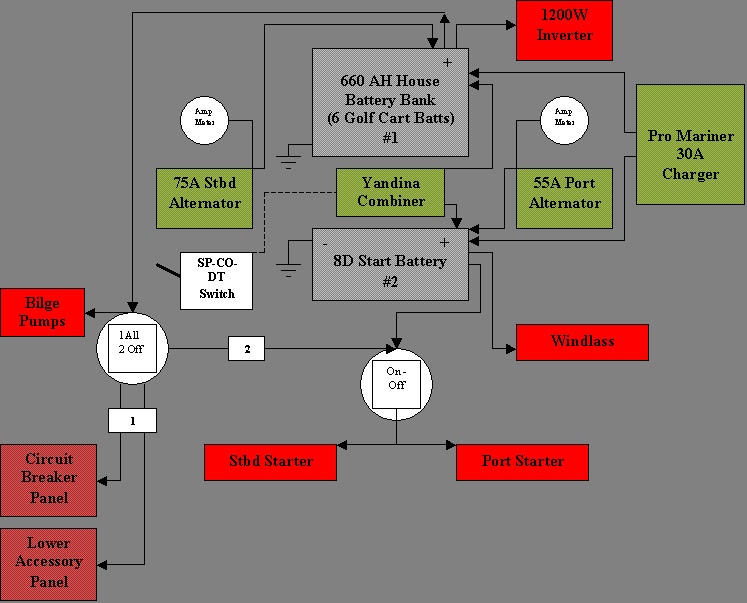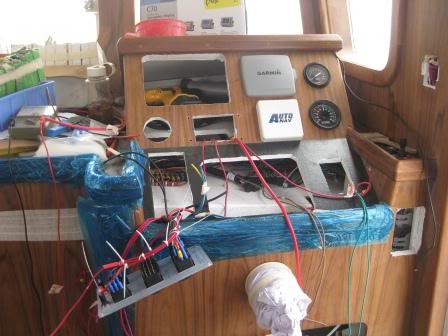timjet
Guru
- Joined
- Apr 9, 2009
- Messages
- 1,920
Well I've discussed this before with some folks here on TF and at Blue Seas and even tried installing a DC-DC converter that didn't work. With my new electronics I don't want the stuff going off line every time I start the engines.
Blue Seas makes a "Add a Battery" kit that is a battery selector switch that works in combination with a ACR (automatic charging relay). If you install the start isolation wire it will keep the house battery bank and engine start battery bank isolated until both engines are started thus accomplishing what I want. However there is a big draw back to this setup. After the engines are started you cannot select the charging current to the lowest bank, the ACR sends the charge equally to both banks. After being on the hook overnight I want all the charging amps from the alternators going to the house bank. Currently to do this I simply select the house bank on the battery selector switch after the engines are started and all the current goes to the house bank.
So back to square one. How bout I install a small wet cell battery at the helm that powers all the electronics and through a diode is charged by the alternators. Thus when I start the engines, the electronics are unaffected because they are powered by their own battery.
Below is a diagram.
Question; will the battery charge from the alternators through the ships battery? I put the diode in to prevent the electronics battery from back flowing into the ships battery. Is this correct and necessary?
Any other comments?
Thanks guys.
Blue Seas makes a "Add a Battery" kit that is a battery selector switch that works in combination with a ACR (automatic charging relay). If you install the start isolation wire it will keep the house battery bank and engine start battery bank isolated until both engines are started thus accomplishing what I want. However there is a big draw back to this setup. After the engines are started you cannot select the charging current to the lowest bank, the ACR sends the charge equally to both banks. After being on the hook overnight I want all the charging amps from the alternators going to the house bank. Currently to do this I simply select the house bank on the battery selector switch after the engines are started and all the current goes to the house bank.
So back to square one. How bout I install a small wet cell battery at the helm that powers all the electronics and through a diode is charged by the alternators. Thus when I start the engines, the electronics are unaffected because they are powered by their own battery.
Below is a diagram.
Question; will the battery charge from the alternators through the ships battery? I put the diode in to prevent the electronics battery from back flowing into the ships battery. Is this correct and necessary?
Any other comments?
Thanks guys.
Attachments
Last edited:





